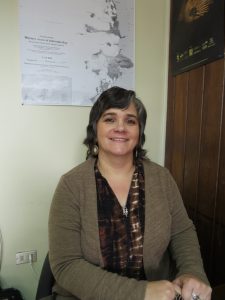Marely Cuba Díaz graduated with a degree in Biology at the Universidad de La Habana (Cuba) in 1993. Afterwards she worked in somatic embryogenesis of coffee and the development of tissue culture and bioreactor culture protocol in crops and ornamental species at the Instituto Nacional de Ciencias Agrícolas (Cuba). After a short stay at CINVESTAV Irapuato (Mexico), under the direction of Luis Herrera Estrella, she was awarded a Master degree in Plant Biology and Biotechnology at the Universidad de La Habana (Cuba), which was based on the implementation of new protocols of genetic transformation of plants through biobalistics. Then she completed a PhD at the Universidad de Chile in 2004 where she studied the regulation of genes overexpressed in response to cold in Deschampsia antarctica, the only native grass that lives in Antarctica. After that, she worked for a short period advising private projects in the floriculture area, supporting the development of specialized protocols in some Conicyt projects and teaching at several universities. Since 2007, she has joined the Los Angeles Campus of the Universidad de Concepción where she has led and participated in several research projects. She is currently in charge of the Laboratory of Biotechnology and Environmental Studies of the same Campus. She returned to the field of Antarctic plants and is interested in studying the mechanisms that allow the Antarctic plants withstand the harsh environmental conditions in the Antarctic ecosystem and in other habitats where these species live and, moreover the evaluation of the physiological, ecological and molecular aspects that allow the resilience of these plants to its current ecosystem conditions and facing the changes due to climate regional change. In addition, she obtained a valuable germplasm collection of Antarctic plants and others Chilean populations of same species which, not only using them for her scientific research and collaborations, but she uses them to develop protocols directed to the potential biotechnological uses from these plants.



